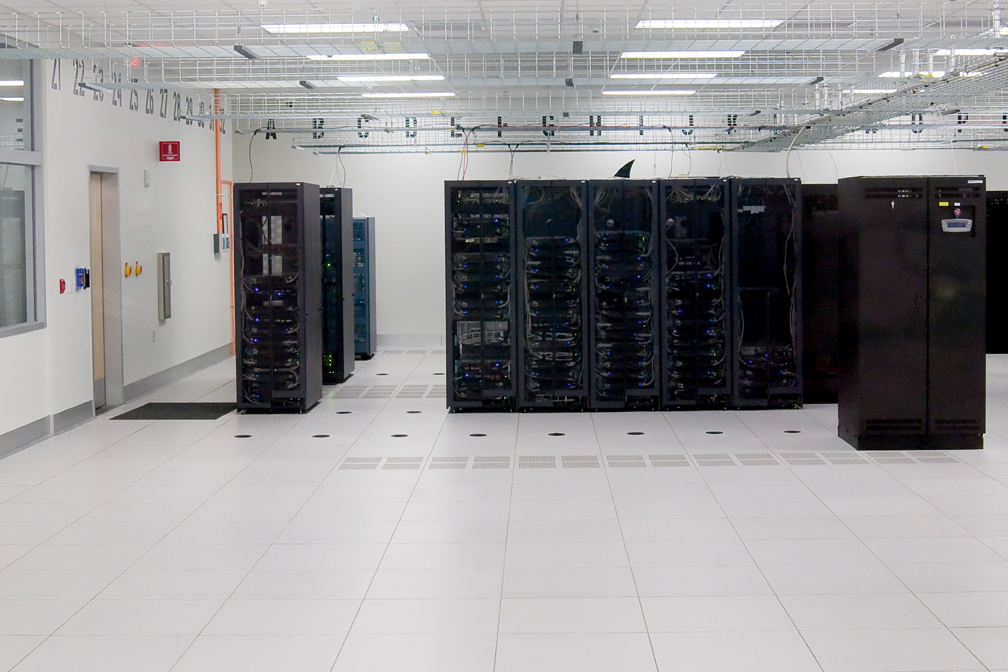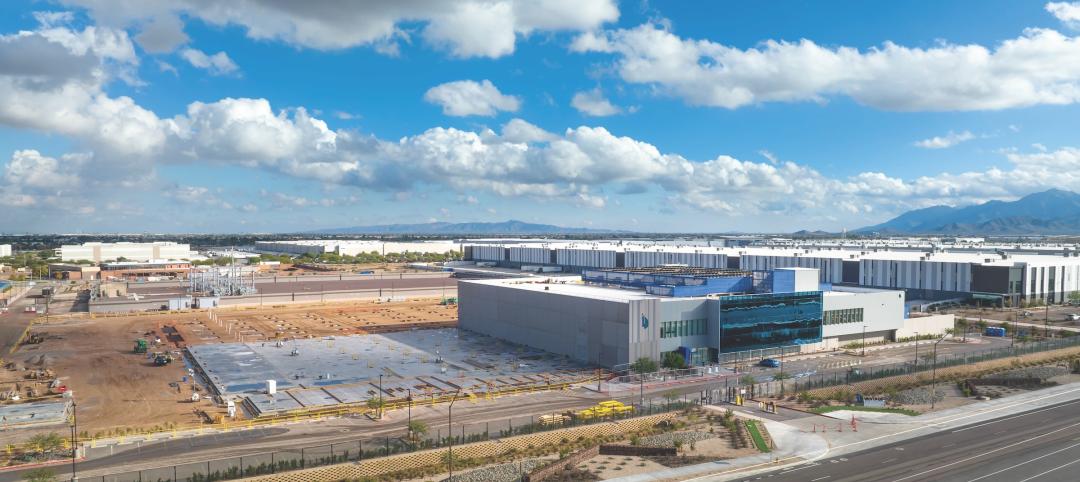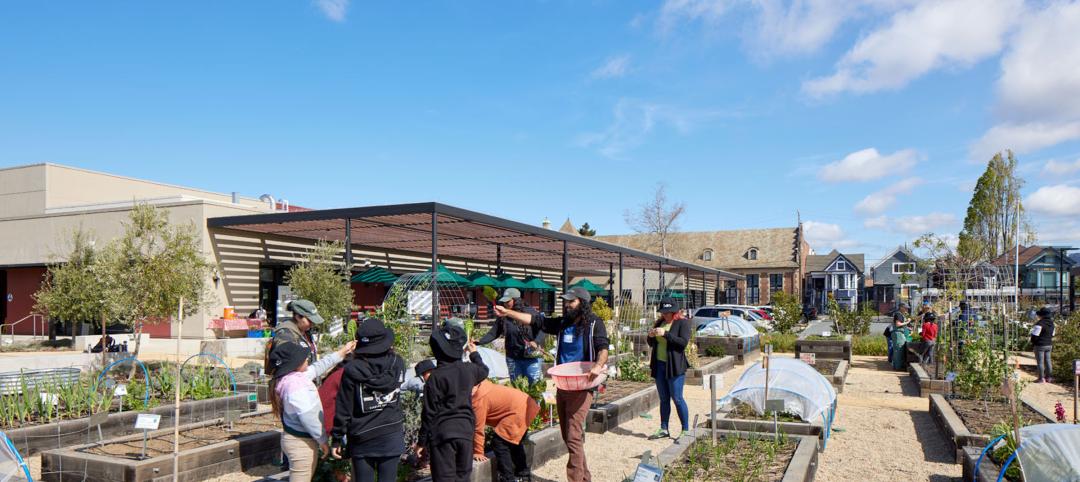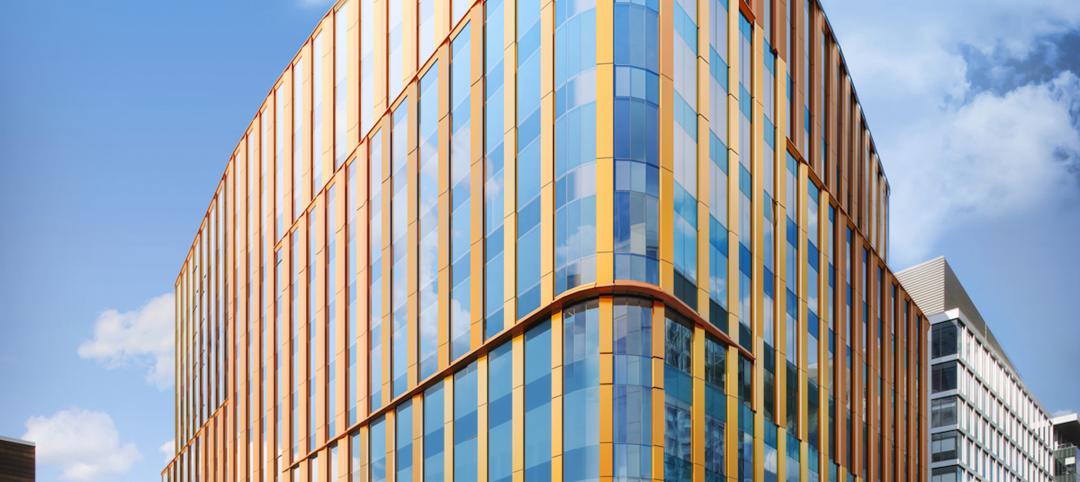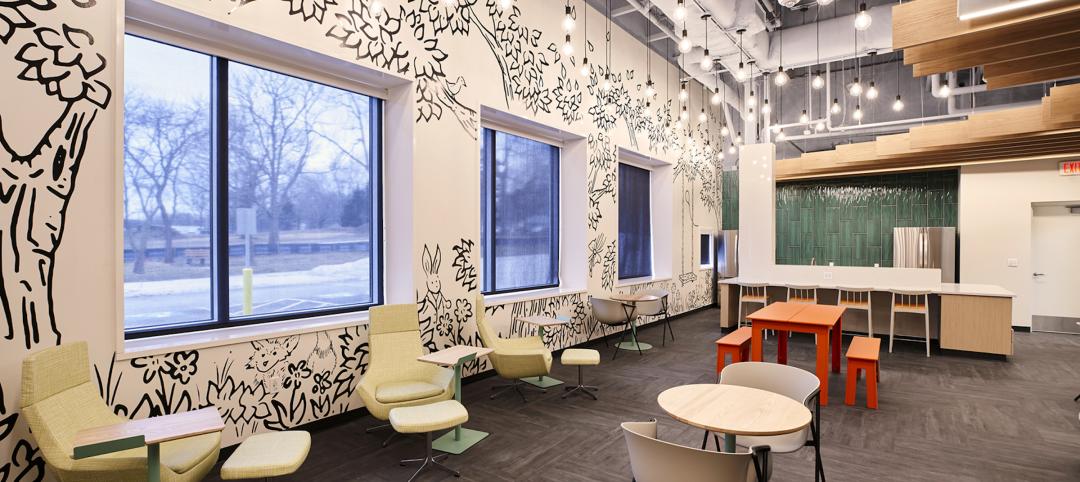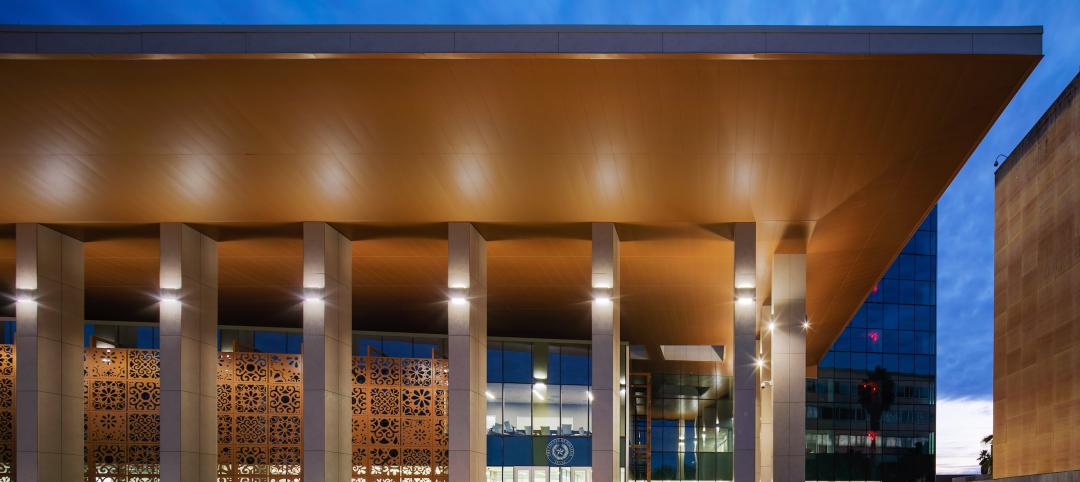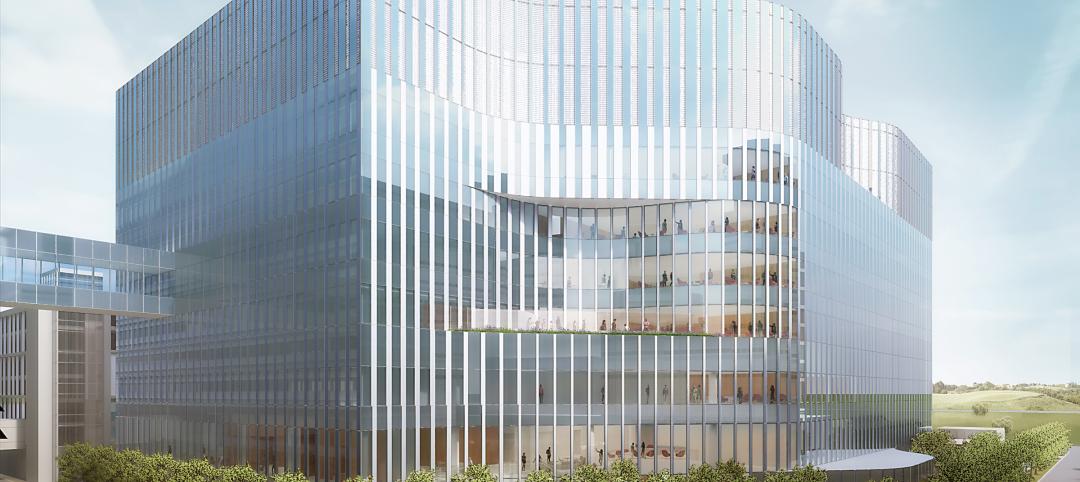In the last six years, the University of Arkansas for Medical Sciences, in Little Rock, has experienced unprecedented growth, including the development of more than $425 million in new or expanded facilities. UAMS is Arkansas’s only comprehensive academic health center, with five colleges, a graduate school, a new 550,000-sf hospital tower (completed in 2009), six centers of excellence, and a statewide network of regional centers. It’s also the state’s largest public employer, providing jobs to more than 10,000 Arkansas healthcare professionals.
But by 2009 all of that growth was taking its toll on the campus’s existing data centers, which had to securely store most of the hospital system’s sensitive medical records.
“In the last five years we’ve had about 35% growth,” said Mark Kenneday, UAMS’s Vice Chancellor of Campus Operations. “Our old main data center was pretty crude, a reflection of the growth we experienced.” The medical center’s IT infrastructure program, he explained, was being developed around the idea of a three-legged stool, with redundancies in all three data centers; if any single location were to go down, another of the centers could pick up the slack.
However, only two of the data center “legs” were in place. Clearly, a new primary data center was needed. That’s when building information modeling came into play.
Rather than just plan and construct another building to house massive racks of servers for a quick fix, Kenneday and the operations team at UAMS looked at the new data center as an opportunity to expand the university’s BIM design standards and create a building that would efficiently serve the UAMS campus for at least the next hundred years.
Even before Kenneday arrived at UAMS in 2007, the medical center required Building Teams to submit designs in Autodesk’s Revit BIM platform. But the Primary Data Center project expanded the 3D BIM requirement in its contracts and bid documents to the entire Building Team. All general contractors had to bid the project as a BIM carry-through. BIM precertification was also required of every architect and engineer on the project.
“We really pushed them into a corner so they would take the responsibility,” Kenneday said. “We already had all of our schematic designs done in BIM. A more profound delivery was a very natural next step. When you realize you have this giant data repository you don’t know what to do with, the BIM model allows you to put some of that information into data knowledge for decision-making down the road.”
MEP and structural design engineer TME Engineering, Little Rock, led the design team for the $4.9 million, 15,000-sf PDC with Kirchner Architecture, also of Little Rock, providing the architectural design. Kenneday said that, notwithstanding the importance of the architectural aspects of the building, it was the information stored inside the PDC that was “vitally important” to the university, which is why the engineers were given primacy on the design team.
In addition to requiring an efficient power usage efficiency (PUE) rating of 4.0 for the project, UAMS further demanded that the Building Team turn over its completed models for use in managing the facility management and providing emergency first response once the building was completed.
“When they deliver their BIM model, it becomes a UAMS product,” Kenneday said. “It becomes a part of our OEM delivery. We’ve just now started to get a repository of BIM information for our latest projects. We have a unique position here in Little Rock, in that we’re the big dog when it comes to healthcare construction, so we can do that.”
TME and Kirchner delivered a design that featured a portfolio of engineering systems: variable volume air handling units to condition the air in the Primary Data Center’s raised floor area, hot aisle enclosures to minimize cold air bypass, a dedicated ventilation unit to provide humidity control, and a chilled water system—in fact, a variable primary low-flow, high-delta-T chilled water system with energy-efficient water-cooled chillers. The heat from the data center’s raised floor area is transferred from the chilled water system to the heating water system using a heat pump chiller/heater; it then is used to heat other buildings on campus.
“We were going for a high energy rating and part of that was helped by the BIM process,” said Mark Mergenschroer, BIM development coordinator at TME. “Architectural, MEP, and structural models were all done in Revit, and it was a learning process for some of the team, since this was the first full BIM project in Arkansas. Was our model perfect all of the time? No, but the team effort and the process was.”
General contractor Vratsinas Construction Co., Little Rock, worked with its subcontractors to provide detailed shop drawings based on information from the Revit models. Project stakeholders and Building Team members could virtually walk through the planned data center and comment on the design thanks to a virtual model made in the Unity 2 gaming engine. (To try the walk-through, go to: http://www.tmecorp.com/unity2.)
The project was completed on schedule and opened last October, 18% under budget. TME was able to beat the university’s PUE target of 4.0, bringing the project in with a PUE rating of 1.36. More importantly, the data center can increase its storage capacity as UAMS continues to grow. The initial buildout uses only about 50% of its server capacity, with the ability to add another 50% as IT services are expanded. The final Revit models are being used for facilities management and planning new UAMS infrastructure.
That capacity will be needed, as the period of growth has not finished at UAMS. Construction started last year on a four-floor expansion to the Donald W. Reynolds Institute on Aging, an existing, four-story Alzheimer’s disease research and treatment facility on the Little Rock campus. Planning is also under way to renovate 24,000 sf in the former main hospital building for the new UAMS Center for Clinical and Translational Research. Both projects use the same BIM requirements used on the Primary Data Center.
“I would prefer for our campus to take a lead position when it comes to BIM,” Kenneday said. “We want to be on the front of the train, rather than on the back. Or under it.” BD+C
Be sure to catch the latest blog from Jeff (“BIMBoy”) Yoders at: www.BDCnetwork.com.
Related Stories
Giants 400 | Nov 14, 2023
Top 90 Justice Facility Architecture Firms for 2023
DLR Group, Stantec, HDR, HOK, and Elevatus Architecture top BD+C's ranking of the nation's largest justice facility architecture and architecture engineering (AE) firms for 2023, as reported in the 2023 Giants 400 Report. Note: This ranking includes revenue from all public safety/justice facilities buildings work, including correctional facilities, fire stations, jails, police stations, and prisons.
Giants 400 | Nov 13, 2023
Top 65 Airport Facility Architecture Firms for 2023
Gensler, Corgan, PGAL, and HOK top BD+C's ranking of the nation's largest airport terminal and airport facilities architecture and architecture engineering (AE) firms for 2023, as reported in the 2023 Giants 400 Report.
Data Centers | Nov 13, 2023
Data center sector trends for 2023-2024
Demand for more data centers is soaring, but delivery can be stymied by supply delays, manpower shortages, and NIMBYism.
Education Facilities | Nov 9, 2023
Oakland schools’ central kitchen cooks up lessons along with 30,000 meals daily
CAW Architects recently completed a facility for the Oakland, Calif., school district that feeds students and teaches them how to grow, harvest, and cook produce grown onsite. The production kitchen at the Unified School District Central Kitchen, Instructional Farm, and Education Center, (“The Center”) prepares and distributes about 30,000 meals a day for district schools lacking their own kitchens.
Laboratories | Nov 8, 2023
Boston’s FORUM building to support cutting-edge life sciences research and development
Global real estate companies Lendlease and Ivanhoé Cambridge recently announced the topping-out of FORUM, a nine-story, 350,000-sf life science building in Boston. Located in Boston Landing, a 15-acre mixed-use community, the $545 million project will achieve operational net zero carbon upon completion in 2024.
Retail Centers | Nov 7, 2023
Omnichannel experiences, mixed-use development among top retail design trends for 2023-2024
Retailer survival continues to hinge on retail design trends like blending online and in-person shopping and mixing retail with other building types, such as offices and residential.
Giants 400 | Nov 6, 2023
Top 110 Cultural Facility Architecture Firms for 2023
Populous, Gensler, HGA, DLR Group, and Quinn Evans top BD+C's ranking of the nation's largest cultural facilities sector architecture and architecture engineering (AE) firms for 2023, as reported in the 2023 Giants 400 Report. Note: This ranking includes revenue from all cultural building sectors, including concert venues, art galleries, museums, performing arts centers, and public libraries.
Giants 400 | Nov 6, 2023
Top 170 Government Building Architecture Firms for 2023
Page Southerland Page, Gensler, Stantec, HOK, and Skidmore, Owings & Merrill top BD+C's ranking of the nation's largest government building sector architecture and architecture engineering (AE) firms for 2023, as reported in the 2023 Giants 400 Report. Note: This ranking includes revenue from all government building sectors, including federal, state, local, military, and Veterans Affairs (VA) buildings.
Designers | Nov 6, 2023
DLR Group opens office in Nashville, Tenn.
DLR Group is expanding its presence in the Southeast with the opening of an office in downtown Nashville, Tenn.—a collaborative effort led by DLR Group Principals Matthew Gulsvig, AIA, LEED AP, and Randall Coy.
Healthcare Facilities | Nov 3, 2023
The University of Chicago Medicine is building its city’s first freestanding cancer center with inpatient and outpatient services
The University of Chicago Medicine (UChicago Medicine) is building Chicago’s first freestanding cancer center with inpatient and outpatient services. Aiming to bridge longstanding health disparities on Chicago’s South Side, the $815 million project will consolidate care and about 200 team members currently spread across at least five buildings. The new facility, which broke ground in September, is expected to open to patients in spring 2027.


